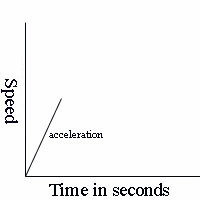
Skydiving
Ever wonder what actually happens during a skydive?
Does a skydiver reach terminal velocity twice in his or her jump?
I plan to answer the above questions with the creation of this website.
I created the following animated image to help you understand what takes place during a skydive. If this pictorial representation does not help there is also a graph below this image you may want to check out. As you can see the skydiver jumps out of the plane, and starts to accelerate. He gains acceleration to the point that his mass is equal to the resistance that is being forced against him, this is called terminal velocity. This is the point where the skydiver free falls. The diver can free fall in any position he wants, but there are two commonly used positions, visit this page to view them. To stop a free fall the diver must deploy his parachute, he decreases his speed and then reaches the point where his mass is equal to the resistance. Again the diver is experiencing terminal velocity until he comes to a stop.

Do you reach Terminal Velocity twice in your skydive?
This was the question that was put forth by our Math teacher, Ms. Spittal. In the beginning I answered no to the above question because I did not believe that a skydiver could reach terminal velocity twice, in actual fact they do. Below is a graph that I have developed for the use of seeing what is actually happening in a skydive.

As you can see during a skydive the diver jumps out of the plane gaining speed, then reaches terminal velocity, this is where the diver's free fall takes place. The diver then pulls his chute which in turn makes the speed of the diver decrease. Over time the diver again reaches terminal velocity, and eventually come to a stop.